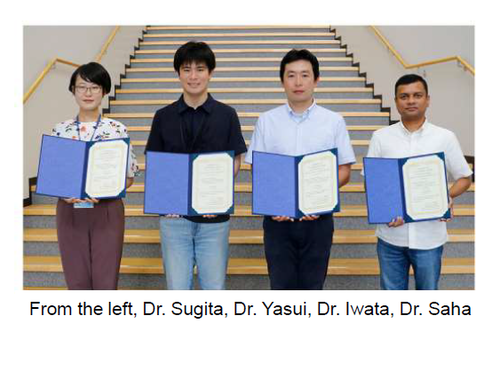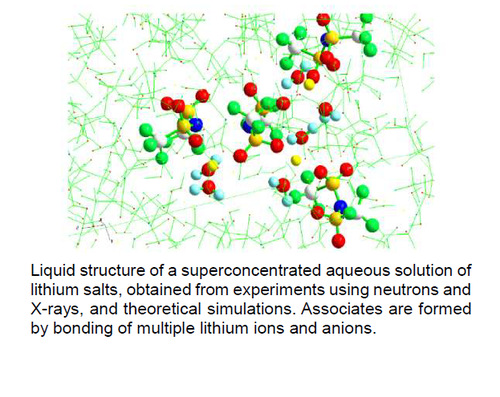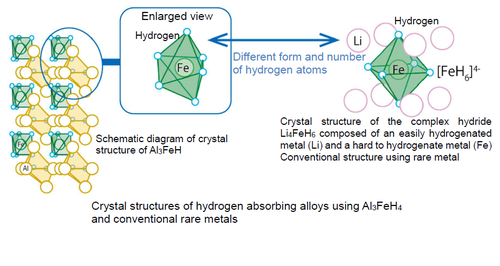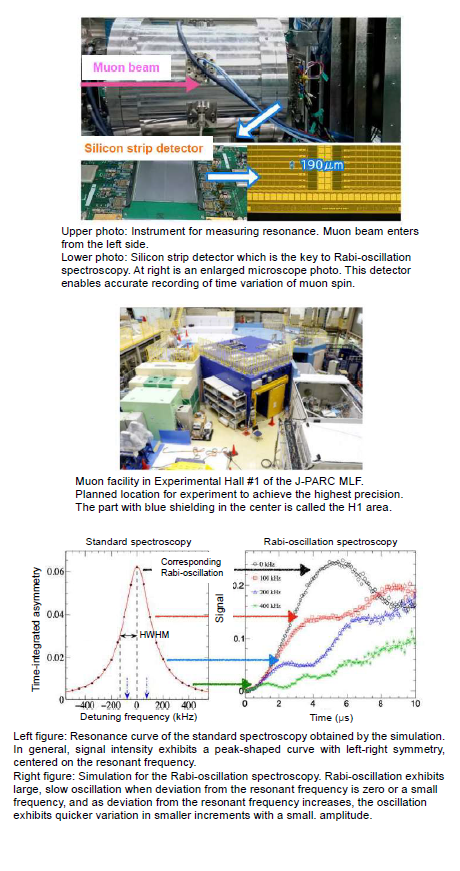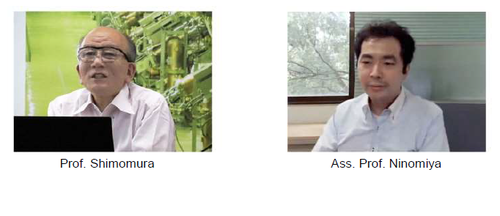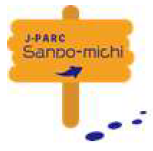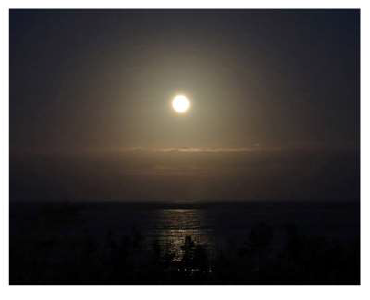J-PARC News September 2021 (Issue #197)
■Winners of Annual Meeting Awards at 18th Annual Meeting of Particle Accelerator Society of Japan
Four staff members at J-PARC won Annual Meeting Awards at the 18th Annual Meeting of the Particle Accelerator Society of Japan (PASJ). The PASJ has established these Annual Meeting Awards to recognize outstanding presentations at their annual meeting, and encourage students and young researchers in the initial stages of their research activities and lives as researchers.
Award winners and their winning presentations are indicated below.
[Oral presentation]
Dr. Takaaki Yasui "Compensation of third-order structure resonances in J-PARC MR"
[Poster presentations]
Dr. Soma Iwata "Research on the placement of EDDY septum magnets and failure in J-PARC MR fast extraction"
Dr. Moe Sugita "Experimental verification of magnetic field measurement probe for RCS bump magnet"
Dr. Pranab Saha "Recent Progress of Laser Stripping POP Demonstration Study at J-PARC RCS"
■Key to Practical Realization of Aqueous Lithium Ion Batteries: Elucidation of Liquid Structure in Superconcentrated Aqueous Solutions of Lithium Salts (July 28, Press Release)
Rechargeable batteries are expected to play an important role in solving climate problems. R&D on safe, high-performance rechargeable batteries is being actively pursued. If the flammable, expensive, organic electrolyte solution used in conventional lithium ion batteries can be replaced with water, that will enable production of safe and inexpensive batteries. However, water undergoes electrolysis at the voltage where lithium ion batteries operate. In recent years, there have been reports of battery driving without electrolysis by using superconcentrated aqueous solutions of lithium salts as the electrolyte. The molecular-level liquid structure of the superconcentrated aqueous solution of lithium salts has been thought to be crucial, but that structure was not well understood.
Professor Yasuhiro Umebayashi of Niigata University and colleagues clarified the liquid structure of a superconcentrated aqueous solution of lithium salts by combining state analysis of lithium ions using Raman spectroscopy, experiments using neutrons and X-rays, and theoretical simulations. The neutron experiments were carried out using the High Intensity Total Diffractometer (NOVA) at J-PARC. The structure elucidated in this research has a major effect on formation of the coating (Solid Electrolyte Interphase (SEI)) which holds the key to drive by aqueous lithium ion batteries. Using these results as a guide, the researchers aim to develop superconcentrated aqueous solutions of lithium salts which form better coatings, and apply these to rechargeable batteries.
■Storing Hydrogen in Aluminum and Iron without Using Rare Elements: Leading Way to New Possibilities in Development of Hydrogen Absorbing Alloys (July 29, Press Release)
Hydrogen energy is another key concept for solving climate problems. A major issue for realizing a hydrogen society is the question of how to store hydrogen. Hydrogen absorbing alloys take atomic hydrogen into the gaps between metal atoms, and store hydrogen compactly in a volume 1/1,000th of the gaseous state. The standard approach is to use an alloy of a metal which reacts easily with hydrogen together with a metal which does not react easily with hydrogen. The former metal is typically chosen from elements called "rare metals", and these are problematic because the resource is scarce and the price is high.
A group led by Hiroyuki Saito of the National Institutes for Quantum Science and Technology has turned to alloys of iron and aluminum — both plentiful metals that don't react easily with hydrogen. By reacting with hydrogen at high temperature and pressure, the group succeeded in synthesizing Al3FeH4, a new metal hydride capable of absorbing hydrogen at the same level as previous alloys using rare metals. When the crystal structure of this alloy was analyzed via synchrotron X-ray diffraction, and neutron diffraction using the High Intensity Total Diffractometer (NOVA) of J-PARC, the alloy was found to have a new crystal structure, different from previous hydrogen absorbing alloys, capable of storing even more hydrogen. Going forward, there is a good prospect of realizing alloys which absorb hydrogen near atmospheric pressure by changing the properties of the alloy surface.
■Thinking in Reverse: Rabi-Oscillation Spectroscopy for Precise Measurement of Muonium Atoms (August 10, Press Release)
Atoms have discrete energy states (levels), and only absorb and emit light with energies (frequencies) corresponding to the differences between levels. Atomic spectroscopy is a research technique for revealing the level structure of an atom by measuring those frequencies (called "resonance frequencies"). In standard spectroscopy, the frequency of light applied to an atom is varied, and the frequency where signal intensity is the largest is measured as the resonant frequency. Control of experiment conditions has been essential for achieving precise measurement.
Researcher Shoichiro Nishimura (KEK), Associate Professor Hiroyuki Torii (University of Tokyo), and other colleagues from the J-PARC Center have devised a new approach to atomic spectroscopy, with higher precision than conventional spectroscopy. With this method, the resonance frequency is found by calculating by using the fact that time dependence of signal intensity at a certain fixed frequency exhibits a characteristic oscillation (Rabi-oscillation) which depends on the deviation from the resonance frequency. By applying this spectroscopy to muonium atoms (in which the atomic nucleus of a hydrogen atom is replaced with a positive muon), the researchers succeeded in precisely measuring the resonance frequency due to hyperfine structure attributable to spin interaction of the electron and positive muon. In the latter half of this fiscal year, the high-intensity muon beamline of J-PARC's Materials and Life Science Experimental Facility, MLF, is scheduled to be complete, and going forward, it should be possible to achieve measurement with higher precision in a shorter time. This will make it possible to determine with the mass of the muon with high precision, and verify quantum electrodynamics and other aspects of the Standard Model of elementary particle physics.
■1st J-PARC Lecture Presentation held (August 25)
J-PARC Center has held lecture presentations to help more people understand our latest experiments and research results. The first lecture was held online with the title "A Gift from Space: Uncovering the Origins of Life with Muons" It discussed the analysis, conducted with negative muon beam produced at J-PARC from June 28 to July 3, of samples from the asteroid Ryugu brought back by the asteroid explorer Hayabusa 2.
First, Professor Koichiro Shimomura of J-PARC explained the method of generating muons and their properties. Then he covered topics such as the composition and features of each facility at J-PARC, results of experiments using those facilities, and results expected in the future.
Next, Associate Professor Kazuhiko Ninomiya of Osaka University explained a unique feature of elemental analysis using muons — the ability to analyze all elements present inside a sample without destroying the sample. He also touched on topics such as analysis in archaeology using this property. He spoke on the need to analyze samples from the asteroid Ryugu, and the significance of using the world's highest intensity negative muon beam produced at J-PARC for this analysis.
The meeting can be viewed on J-PARC's YouTube channel, established in August.
Please subscribe to our channel! https://www.youtube.com/watch?v=Ohw6wqHH8Wc
■J-PARC Hello Science: "Plan to Upgrade the J-PARC Main Ring" (August 27)
Due to the declaration of a state of emergency by Ibaraki Prefecture, J-PARC Hello Science for August was held online only.
The instructor was Dr. Yoshinori Kurimoto of the Accelerator Division.
The Main Ring, MR, is the largest of the three accelerators at J-PARC. The circumference is approximately 1.6 km. It accelerates 3-GeV protons received from the RCS accelerator to 30 GeV. The accelerated proton beam is delivered to the Hadron Facility and the Neutrino Facility, and secondary particles are produced by striking targets in those facilities. These secondary particles include neutrinos and mesons needed for experiments.
The most relevant point for this upgrade of the MR is increasing the number of neutrinos delivered to the Super-Kamiokande in Gifu Prefecture. This requires increasing the number of protons delivered to the target. R&D is being carried out on two techniques for that purpose: increasing the number of protons that can be accelerated at once, and shortening the acceleration time to deliver the accelerated proton beams more frequently. . This upgrade corresponds to the latter. The actual plan involves reducing the interval between the beam deliveries from 2.48 seconds to 1.32. The instructor presented details on the upgrade of magnet power supplies and installation of a high-capacity capacitor to achieve this shorter interval.
■J-PARC Online Open House 2021
Just like last year, this year’s Open House will be held on Saturday, November 13. Many fun events are planned, including live streaming of invited speakers, video from inside facilities not normally open to the public, and a Kids' Corner.
■Sanpo-michi #15: Harvest Moon
The J-PARC Research Building is a noted spot for viewing the sunrise and moonrise. The ocean viewed from the east side window extends to the horizon, and we can see the moon or the sun rising in the sky. On the night of September 21, we were fortunate to have no wind and a clear sky for the harvest moon.
The photo below was taken 16 minutes after the moonrise, at 18:21. The light of the beautiful full moon reflected across the sea surface, from the open sea to the coast, and its brightness changed in synchronization with the intricate movements of the waves.
And then we could hear crickets chirping clear up on the fourth floor through the open window. Recently, there have been more and more online meetings, and when the evening comes, our eyes and ears feel overtaxed. The moonlight and the cricket sounds made us relaxed for a while.

